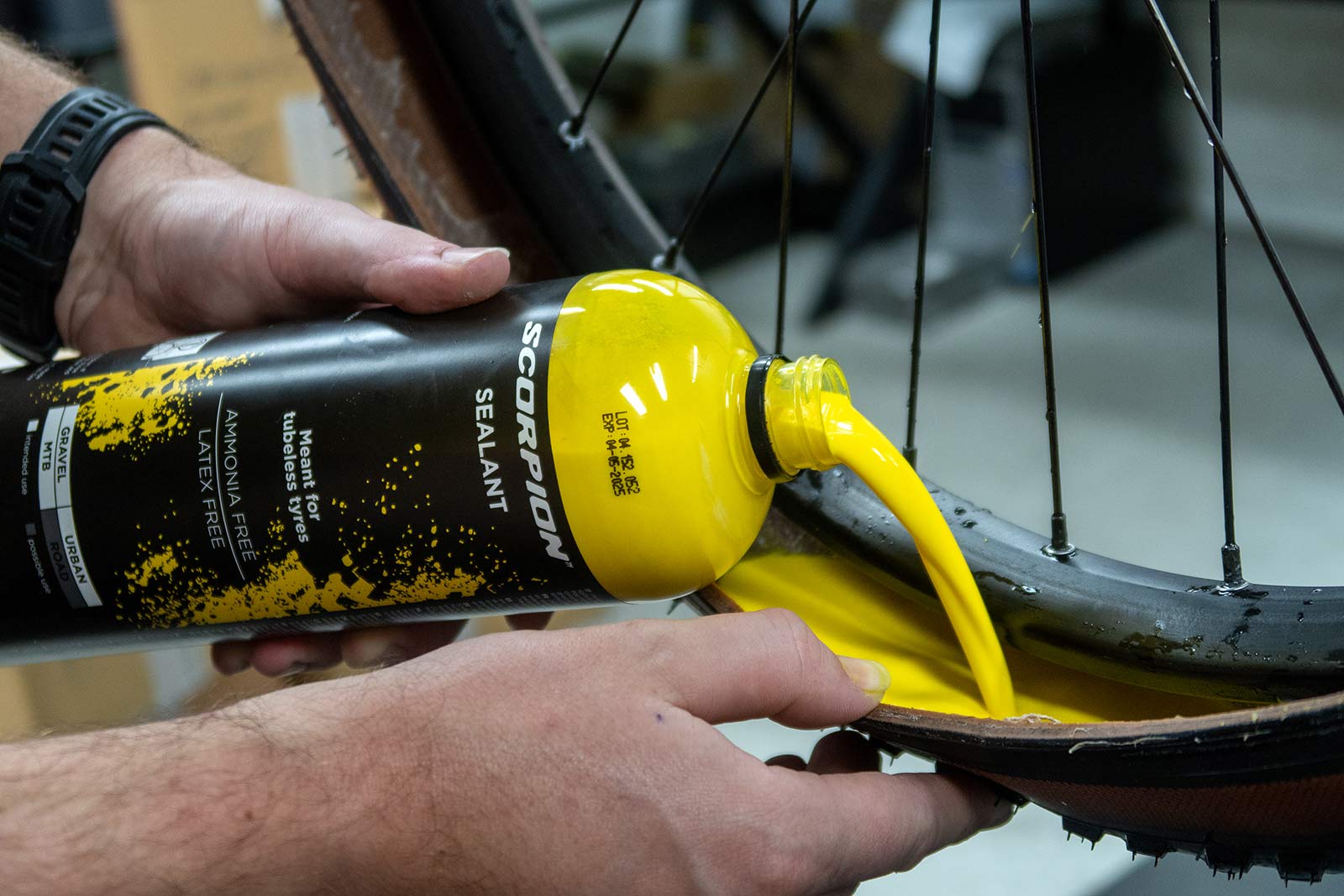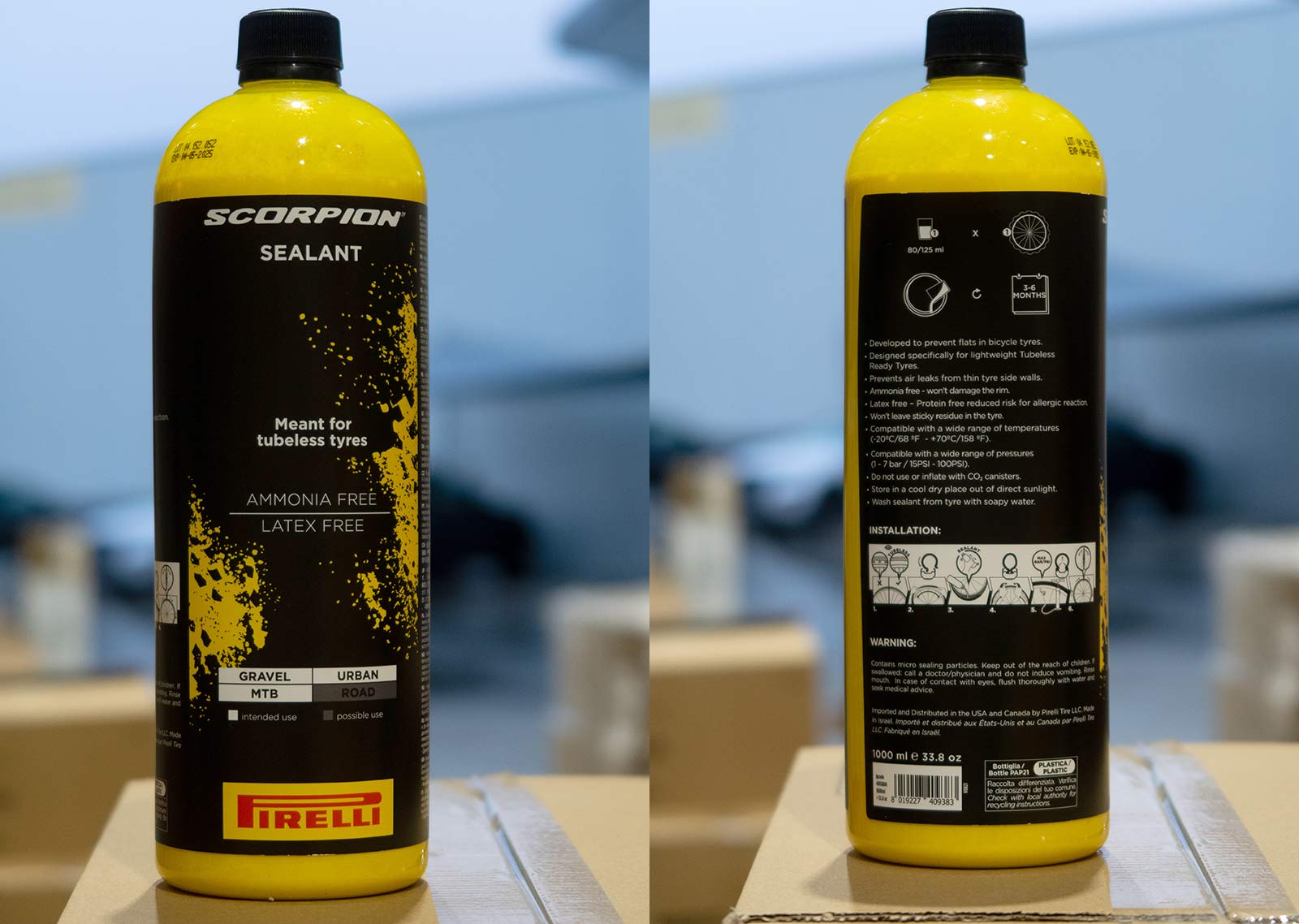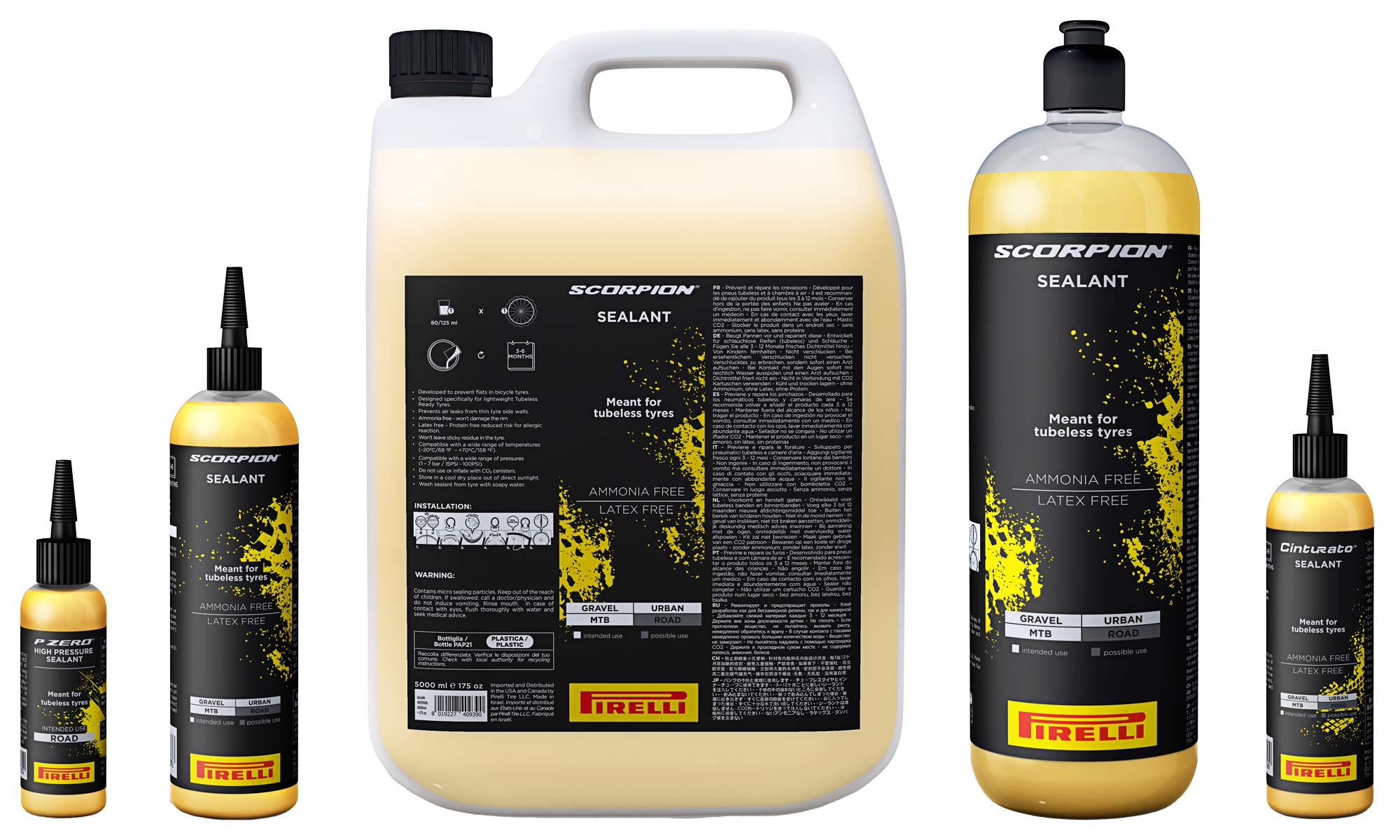The new Pirelli tubeless tire sealant comes in two unique formulas, one for high-pressure road use, and the other for gravel, mountain bikes, and urban/commuter bikes.
Both are bright yellow, which should make spotting smaller punctures easier, and they’ll come in a huge range of bottle sizes, from single-use to shop jugs…
For road bikes, the Pirelli P-Zero sealant uses an ammonia- and latex-based formula made for higher tire pressures and is CO2 compatible. It also has micro-sealing particles to help it plug the hole quickly, and it’s good from -20ºC (-4ºF) up to 70ºC (158ºF).
For gravel and MTB, there’s the Cinturato / Scorpion blend, which is the same, but named differently depending on the bottle simply to match their tire nomemclature to reassure you at retail that you’re getting the right thing.
This formula is ammonia- and latex/protein-free, so it’s safer for all rims and is hypo-allergenic. They say it works well with tire pressures from 1bar (15psi) to 7bar (100psi) across the same temperature range as the P-Zero road sealant.
They say this low-pressure version is only CO2 compatible in an emergency, that the gas will speed up coagulation, so you’ll want to replace the sealant when you get done with the ride. Otherwise, both versions are good for 3-6 months depending on weather conditions and quantity used.
At launch, the P-Zero High Pressure Sealant only comes in a 60ml (2oz) single-use bottle. The Cinturato / Scorpion version comes in a 125ml (4.5oz) travel bottle, and larger 240ml (8oz), 1L (33.8oz) and 5L (175oz) bottles for home and shop use.
Pirelli says all of them run clean and won’t leave a sticky residue inside your tire when it’s time to refresh it.


